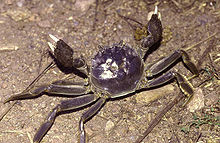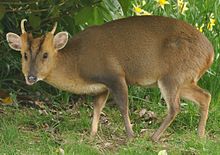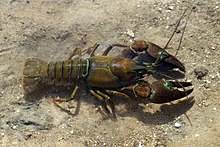
Reynoutria japonica, synonyms Fallopia japonica and Polygonum cuspidatum, is a species of herbaceous perennial plant in the knotweed and buckwheat family Polygonaceae. Common names include Japanese knotweed and Asian knotweed. It is native to East Asia in Japan, China and Korea. In North America and Europe, the species has successfully established itself in numerous habitats, and is classified as a pest and invasive species in several countries. The plant is popular with beekeepers, and its young stems are edible, making it an increasingly popular foraged vegetable with a flavour described as lemony rhubarb.
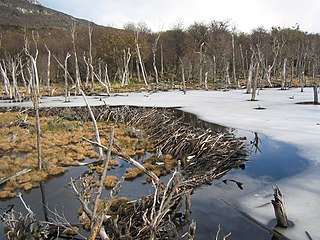
An invasive species is an introduced species that harms its new environment. Invasive species adversely affect habitats and bioregions, causing ecological, environmental, and/or economic damage. The term can also be used for native species that become harmful to their native environment after human alterations to its food web. Since the 20th century, invasive species have become serious economic, social, and environmental threats worldwide.

The Wildlife and Countryside Act 1981 is an act of Parliament in the United Kingdom implemented to comply with European Council Directive 79/409/EEC on the conservation of wild birds. In short, the act gives protection to native species, controls the release of non-native species, enhances the protection of Sites of Special Scientific Interest and builds upon the rights of way rules in the National Parks and Access to the Countryside Act 1949. The act is split into 4 parts covering 74 sections; it also includes 17 schedules.
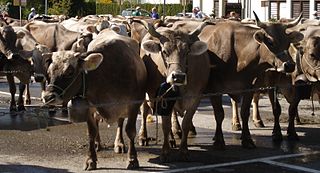
An introduced species, alien species, exotic species, adventive species, immigrant species, foreign species, non-indigenous species, or non-native species is a species living outside its native distributional range, but which has arrived there by human activity, directly or indirectly, and either deliberately or accidentally. Non-native species can have various effects on the local ecosystem. Introduced species that become established and spread beyond the place of introduction are considered naturalized. The process of human-caused introduction is distinguished from biological colonization, in which species spread to new areas through "natural" (non-human) means such as storms and rafting. The Latin expression neobiota captures the characteristic that these species are new biota to their environment in terms of established biological network relationships. Neobiota can further be divided into neozoa and neophyta (plants).

The signal crayfish is a North American species of crayfish. It was introduced to Europe in the 1960s to supplement the North European Astacus astacus fisheries, which were being damaged by crayfish plague, but the imports turned out to be a carrier of that disease. The signal crayfish is now considered an invasive species across Europe, Japan, and California, ousting native species there.

Heracleum mantegazzianum, commonly known as giant hogweed, is a monocarpic perennial herbaceous plant in the carrot family Apiaceae. H. mantegazzianum is also known as cartwheel-flower, giant cow parsley, giant cow parsnip, or hogsbane. In New Zealand, it is also sometimes called wild parsnip or wild rhubarb.

Impatiens glandulifera, Himalayan balsam, is a large annual plant native to the Himalayas. Via human introduction it is now present across much of the Northern Hemisphere and is considered an invasive species in many areas. Uprooting or cutting the plants is an effective means of control.

Reeves's muntjac, also known as the Chinese muntjac, is a species of muntjac found widely in south-eastern China and Taiwan. It has also been introduced in the United Kingdom, Ireland, the Netherlands, Belgium, and Japan. It takes its name from John Reeves, a naturalist employed by the British East India Company in the 19th century.

Myriophyllum aquaticum is a flowering plant, a vascular dicot, commonly called parrot's-feather and parrot feather watermilfoil.

The pond slider is a species of common, medium-sized, semiaquatic turtle. Three subspecies are described, the most recognizable of which is the red-eared slider, which is popular in the pet trade and has been introduced to other parts of the world by people releasing it to the wild. Hatchling and juvenile pond sliders have a green upper shell (carapace), yellow bottom shell (plastron), and green and yellow stripes and markings on their skin. These patterns and colors in the skin and shell fade with age until the carapace is a muted olive green to brown and the plastron is a dull yellow or darker. Some sliders become almost black with few visible markings. The carapace is oval with a bit of rounding and a central crest with knobs, but these features soften and fade with age, adults being smoother and flatter. For determining an adult slider's sex, males typically have much longer front claws than adult females, while females usually have shorter, more slender tails than males. Their lifespans range from 20 to 50 years.

Hydrocotyle ranunculoides, known commonly as floating pennywort, or floating marshpennywort, is an aquatic plant in the family Apiaceae. It is native to North and South America.

The marbled crayfish or Marmorkrebs is a parthenogenetic crayfish that was discovered in the pet trade in Germany in 1995. Marbled crayfish are closely related to the "slough crayfish", Procambarus fallax, which is widely distributed across Florida. No natural populations of marbled crayfish are known. Information provided by one of the original pet traders as to where the marbled crayfish originated was deemed "totally confusing and unreliable". The informal name Marmorkrebs is German for "marbled crayfish".

Elodea nuttallii is a species of waterweed known by the common name western waterweed or Nuttall's waterweed. This is a perennial aquatic plant which is native to North America where it grows submersed in lakes, rivers, and other shallow water bodies. It is also found in Eurasia, where it is commonly weedy; it is not known as a weed species in its native range. It is sometimes used as an aquarium plant.

The stone moroko, also known as the topmouth gudgeon, is a fish belonging to the Cyprinidae family, native to Asia, but introduced and now considered an invasive species in Europe and North America. The fish's size is rarely above 8 cm and usually 2 to 7.5 cm long.

Islands, such as the British Isles, can be adversely affected by the introduction of non-native species. Often an island will have several distinct species not present on the nearest mainland, and vice versa. The native flora and fauna of islands which have been isolated for a longer period of time such as New Zealand or Hawaii are more vulnerable than islands such as Great Britain and Ireland, which became isolated more recently.

Faxonius virilis is a species of crayfish known as the virile crayfish, northern crayfish,eastern crayfish, and lesser known as the lake crayfish or common crawfish. Faxonius virilis was reclassified in August 2017, and the genus was changed from Orconectes to Faxonius. It is native to the central United States, east to tributaries of Lake Erie, Lake Ontario, Lake Champlain and the St. Lawrence River in New York and to much of Canada.

Invasive species are a crucial threat to many native habitats and species of the United States and a significant cost to agriculture, forestry, and recreation. An invasive species refers to an organism that is not native to a specific region and poses significant economic and environmental threats to its new habitat. The term "invasive species" can also refer to feral species or introduced diseases. Some introduced species, such as the dandelion, do not cause significant economic or ecologic damage and are not widely considered as invasive. Economic damages associated with invasive species' effects and control costs are estimated at $120 billion per year.
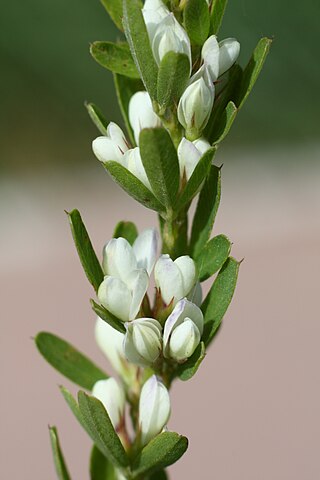
Lespedeza cuneata is a species of flowering plant in the legume family known by the common names Chinese bushclover and sericea lespedeza, or just sericea. It is native to Asia and is present elsewhere as an introduced species and sometimes an invasive plant. Australian populations of Lespedeza juncea have sometimes been considered to belong to this species but are now considered to be distinct.

Climate change and invasive species refers to the process of the environmental destabilization caused by climate change. This environmental change facilitates the spread of invasive species — species that are not historically found in a certain region, and often bring about a negative impact to that region's native species. This complex relationship is notable because climate change and invasive species are also considered by the USDA to be two of the top four causes of global biodiversity loss.

